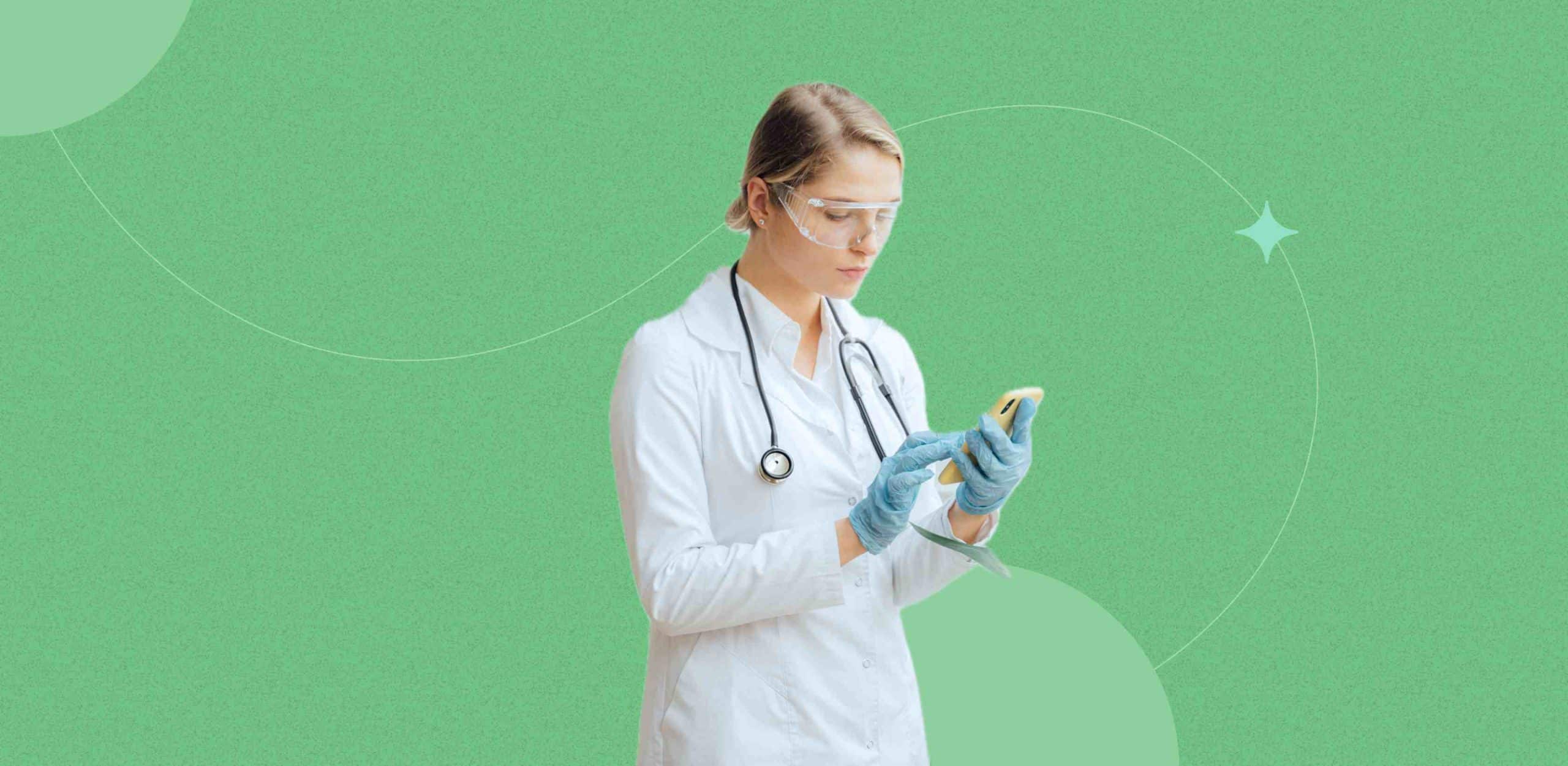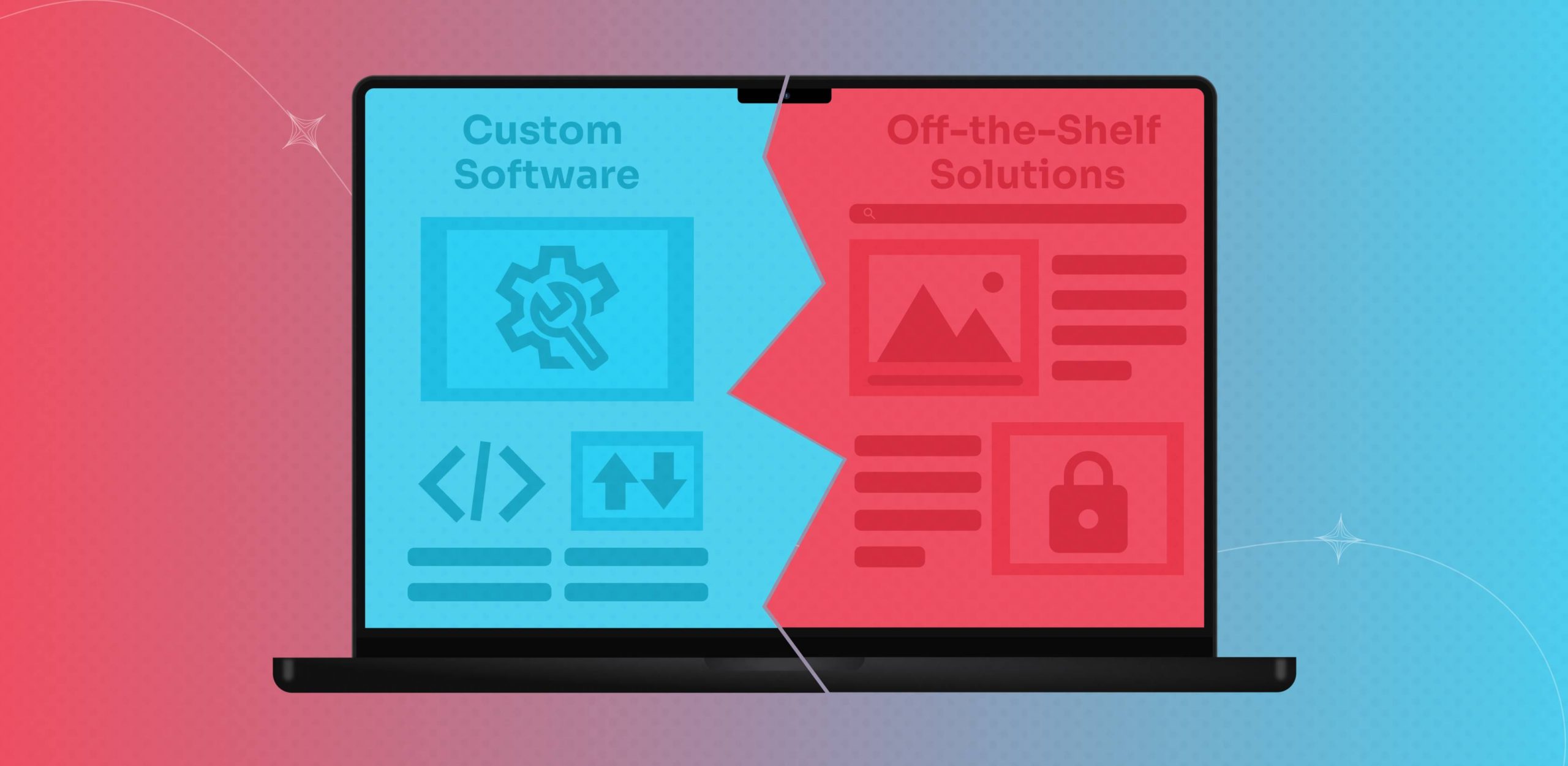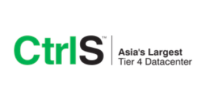Telemedicine app development is revolutionizing healthcare delivery, especially in rural areas where access to quality medical services remains a major challenge. Rural communities often face limited healthcare facilities, a scarcity of specialists, and long travel distances, which can lead to delayed or inadequate medical attention. These barriers highlight the urgent need for innovative solutions, and telemedicine apps have emerged as a game-changer in bridging the healthcare gap.
By facilitating remote consultations, real-time access to healthcare professionals, and continuous health monitoring, telemedicine apps bring critical medical services directly to patients in remote locations. As a leading telemedicine app development company, Enfin recognizes the transformative impact these applications have on rural healthcare. In this blog, we will delve into how telemedicine app development is reshaping healthcare in rural areas, explore the key features of a successful telemedicine app, and outline the steps involved in creating a custom telehealth solution.
What is Telemedicine and Telemedicine App Development?
Telemedicine refers to the delivery of healthcare services through telecommunications technology, allowing patients and healthcare providers to connect remotely. Telemedicine app development focuses on creating digital platforms that facilitate these remote interactions. These apps provide various services, including video consultations, remote patient monitoring, and access to medical records, all of which improve patient outcomes.
A telemedicine app development company specializes in designing and developing custom telemedicine applications that cater to the specific needs of healthcare providers and patients. These apps are particularly valuable in rural healthcare, where they help bridge the gap by offering accessible and convenient medical services.
Types of Telemedicine App Development Services
Telemedicine app development services can be broadly categorized into three main types: Live Video Consultations, Remote Patient Monitoring, and Mobile Health (mHealth) Applications. Each type plays a crucial role in enhancing healthcare delivery in rural areas.
- Live Video Consultations
Live video consultations allow patients to interact with healthcare providers in real-time, similar to an in-person visit. These consultations are invaluable for patients living in rural areas, as they provide access to specialists without the need for travel. Live video consultations can be used for routine check-ups, follow-ups, mental health services, and even specialist consultations. - Remote Patient Monitoring
Remote Patient Monitoring (RPM) involves continuous tracking of a patient’s health data using wearable devices and apps. This data is then transmitted to healthcare providers, who can monitor the patient’s condition in real-time. RPM is particularly beneficial for managing chronic diseases, as it allows for ongoing monitoring and quick interventions when needed. For rural patients, this means they can manage their health conditions without frequent trips to a hospital. - Mobile Health (mHealth) Applications
Mobile Health (mHealth) applications are health-related apps that provide access to healthcare services, educational resources, and self-care tools. These apps empower patients by providing information on health conditions, medication reminders, lifestyle advice, and access to healthcare providers. mHealth apps are an essential component of telemedicine app development, making healthcare information and resources readily available at the fingertips of rural patients.
Understanding the Need for Telemedicine in Rural Areas
Rural areas often struggle with healthcare access due to a lack of medical professionals, fewer healthcare facilities, and challenging geography. Rural hospitals and clinics are often underfunded, understaffed, and sometimes nonexistent, forcing patients to travel long distances for basic medical care. This can lead to delays in receiving care, worsening of conditions, and higher overall healthcare costs.
The demand for healthcare services in rural areas is steadily increasing due to an aging population and a rise in chronic diseases such as diabetes, hypertension, and heart disease. Telemedicine app development offers a solution by providing virtual access to healthcare services, enabling patients to receive timely care without the need for long-distance travel. Through technology, telemedicine is effectively addressing the critical healthcare needs of rural populations.
How Telemedicine Apps Are Bridging the Gap in Rural Healthcare?
Telemedicine apps are revolutionizing rural healthcare by overcoming traditional barriers and making healthcare services more accessible, affordable, and efficient. They play a crucial role in connecting rural populations with healthcare providers, allowing for more proactive and preventive care. Here’s an in-depth look at how telemedicine apps are bridging the healthcare gap in rural areas:
- Access to Specialists
One of the most significant challenges in rural healthcare is the lack of access to medical specialists. Rural areas often have a shortage of doctors, especially specialists like cardiologists, endocrinologists, and mental health professionals. Telemedicine apps help address this gap by connecting rural patients with specialists who may be hundreds of miles away, providing the expertise needed for accurate diagnoses and effective treatment plans. - Reduced Travel Time and Costs
For rural patients, accessing healthcare often means traveling long distances to reach the nearest clinic or hospital. This can involve significant time, expense, and physical strain, particularly for elderly patients, those with disabilities, or those suffering from chronic conditions. Telemedicine apps help to mitigate these challenges by bringing healthcare services directly to the patient’s home. - Timely Care and Early Intervention
Delayed access to care is a significant issue in rural healthcare, often leading to the worsening of conditions that could have been managed with earlier intervention. Telemedicine apps play a crucial role in providing timely care, which can be life-saving in many instances. - Continuous Monitoring and Chronic Disease Management
Chronic diseases such as diabetes, hypertension, and heart disease are prevalent in rural areas and require ongoing management. Telemedicine apps support continuous monitoring, making it easier for healthcare providers to keep track of patients’ health and make necessary adjustments to treatment plans in real-time.
Contact us today to develop your custom telemedicine app!
Key Features of a Successful Telemedicine App
A successful telemedicine app development requires incorporating features that enhance user experience, ensure data security, and provide effective healthcare delivery. The right combination of features can significantly improve patient outcomes, streamline healthcare operations, and foster trust among users. Below are some of the most critical features that contribute to the success of a telemedicine app:
- Secure Video and Audio Consultations
One of the most fundamental features of a telemedicine app is secure video and audio consultations, which allow seamless, real-time communication between patients and healthcare providers. This feature replicates the experience of an in-person visit, providing a convenient and effective way for patients to receive medical advice, diagnoses, and follow-ups without leaving their homes. High-quality video and audio capabilities are essential to ensure clear communication and accurate assessments during consultations. Moreover, the use of end-to-end encryption safeguards the privacy of these interactions, ensuring that sensitive patient information remains confidential and secure. - Appointment Scheduling and Reminders
Appointment scheduling and automated reminders are vital features that enhance the user experience by simplifying the process of booking consultations. Patients can easily view available time slots, schedule appointments, and receive confirmation notifications within the app. Automated reminders sent via SMS, email, or in-app notifications help reduce missed appointments, which is a common issue in healthcare settings. This not only improves patient compliance but also optimizes the healthcare provider’s schedule, ensuring that time is used efficiently. For rural patients who may have difficulty keeping track of appointments, these reminders serve as crucial tools to ensure consistent care. - Electronic Health Records (EHR) Integration
Integrating Electronic Health Records (EHR) within the telemedicine app allows healthcare providers to access a patient’s complete medical history, including previous diagnoses, treatments, medications, allergies, and more. This integration improves the quality of care by providing doctors with comprehensive information at their fingertips, facilitating accurate decision-making and personalized treatment plans. For patients, EHR integration means that their health data is consistently updated and easily accessible, reducing the need to repeatedly provide medical history during consultations. This feature also enhances coordination between different healthcare providers, ensuring continuity of care across various touchpoints. - In-App Messaging and Notifications
In-app messaging provides a secure channel for ongoing communication between patients and healthcare providers. This feature allows patients to ask follow-up questions, clarify doubts, and receive updates without the need for a formal consultation. For healthcare providers, it offers a convenient way to communicate important information, share test results, or provide instructions post-consultation. Push notifications keep users informed about appointment reminders, new messages, or updates regarding their care plan, enhancing engagement and adherence to treatment protocols. In-app messaging builds a stronger patient-provider relationship by fostering continuous, open communication in a secure and controlled environment. - Prescription Management
Prescription management is a crucial feature that streamlines the process of prescribing and refilling medications, making it convenient for both patients and healthcare providers. Through the telemedicine app, doctors can generate electronic prescriptions that are directly sent to the patient’s preferred pharmacy, eliminating the need for physical paperwork. Patients can also request medication refills, track their prescriptions, and receive reminders to take their medications as prescribed. This feature not only saves time but also reduces the chances of medication errors, enhances medication adherence, and ensures that patients have timely access to the drugs they need, which is particularly beneficial in remote and underserved areas. - Multi-language Support
Multi-language support is essential in a telemedicine app, especially when catering to diverse populations in rural areas where multiple languages or dialects may be spoken. By offering language options, the app can better serve patients who may not be fluent in the primary language of the healthcare provider. This feature helps break down language barriers, allowing for more effective communication and ensuring that patients fully understand their medical conditions, treatment plans, and instructions. Multi-language support fosters inclusivity and accessibility, making healthcare services more equitable and tailored to the needs of various communities. - Data Security and Compliance
Data security and compliance are paramount in telemedicine, where sensitive patient information is frequently exchanged. The app must comply with healthcare regulations such as the Health Insurance Portability and Accountability Act (HIPAA) in the United States or the General Data Protection Regulation (GDPR) in the European Union. These regulations mandate stringent security measures to protect patient data, including encryption, secure authentication, and regular security audits. Ensuring data security builds trust among users, who need assurance that their private health information is safe from unauthorized access or cyber threats. Compliance with legal standards not only protects patients but also safeguards healthcare providers from potential legal liabilities.
Steps to a Telemedicine App Development for Rural Healthcare
A telemedicine app development specifically for rural healthcare requires a strategic approach that addresses the unique challenges faced by rural populations. Each step in the development process plays a crucial role in creating an app that is effective, user-friendly, and secure, ultimately ensuring it meets the needs of both healthcare providers and patients.
- Market Research and Identifying Needs
The first step in a telemedicine app development for rural healthcare is conducting thorough market research to identify the specific needs and challenges of the target audience. This involves analyzing the healthcare landscape in rural areas, understanding the most prevalent health issues, and identifying the gaps in current healthcare delivery. Engaging with healthcare providers, patients, and other stakeholders can provide valuable insights into the pain points that the app can address, such as limited access to specialists, transportation barriers, or the need for continuous monitoring of chronic conditions. The findings from this research will guide the development process, ensuring that the app’s features are tailored to meet the specific needs of rural users and deliver maximum impact. - Choosing the Right Technology Stack
Selecting the right technology stack is a critical decision in telemedicine app development, as it directly influences the app’s performance, scalability, and security. A technology stack refers to the combination of programming languages, frameworks, and tools used to build the application. For a telemedicine app, it’s essential to choose technologies that support real-time communication, data encryption, and seamless integration with other healthcare systems. Common technologies used in telemedicine apps include React Native or Flutter for cross-platform development, WebRTC for video streaming, and secure cloud platforms like AWS or Google Cloud for data storage. The right technology stack ensures that the app remains robust, adaptable, and capable of handling the high volume of data and interactions typical in telehealth services. - UI/UX Design
Designing an intuitive and user-friendly interface is essential to the success of any telemedicine app, especially for rural users who may have varying levels of digital literacy. The user interface (UI) and user experience (UX) design should focus on simplicity, accessibility, and ease of navigation. Key design elements include clear icons, large buttons, straightforward language, and an easy-to-follow layout that guides users through the app’s functionalities. The design should also consider factors such as screen readability in different lighting conditions and the ability to function well on lower-end devices, which are common in rural areas. An effective UI/UX design enhances user engagement, reduces the learning curve, and ensures that both patients and healthcare providers can use the app with confidence and ease. - Development and Integration
The development phase involves coding the app’s core functionalities and integrating essential features such as secure video consultations, electronic health records (EHR) systems, appointment scheduling, and payment gateways. This step is where the blueprint of the app comes to life, transforming design mockups into a fully functional platform. Integration with existing healthcare systems is crucial to ensure seamless access to patient data and continuity of care. Additionally, features like secure messaging, prescription management, and remote monitoring capabilities must be developed with a focus on security and compliance with healthcare regulations. Collaborating with experienced developers and a telemedicine app development company can help ensure that the app is built to meet the highest standards of quality, functionality, and security. - Testing
Testing is a vital step in telemedicine app development, as it ensures the app is reliable, secure, and performs as expected under real-world conditions. This phase involves rigorous testing of all app components, including functionality, usability, security, and compatibility across various devices and operating systems. Quality assurance (QA) teams perform both manual and automated tests to identify and fix bugs, security vulnerabilities, and performance issues. Usability testing is particularly important in telemedicine, as it evaluates how easily patients and healthcare providers can navigate the app and complete tasks. Security testing checks for compliance with regulations like HIPAA and GDPR, ensuring that patient data is protected against breaches. Thorough testing helps to refine the app, enhancing its quality and user experience before launch. - Launch and Continuous Improvement
After successful testing, the app is ready for launch, but the development process doesn’t end there. Launching the app is followed by continuous monitoring and the collection of user feedback to identify areas for improvement. This feedback loop is essential for understanding how the app performs in real-world scenarios and uncovering potential issues that weren’t evident during testing. Regular updates and improvements based on user input help to enhance the app’s functionality, address any emerging needs, and keep the app aligned with evolving healthcare trends and technologies. Continuous improvement ensures that the app remains relevant, user-friendly, and effective in delivering healthcare services, thereby maximizing its impact on rural healthcare delivery.
Top Technologies Used in Telemedicine App Development
Telemedicine app development has revolutionized the healthcare industry by incorporating advanced technologies that enhance the quality of care and improve the patient experience. These technologies are integral to creating apps that are not only user-friendly but also highly efficient and secure. Below, we delve deeper into the top technologies that are driving innovation in telemedicine app development.
- Artificial Intelligence (AI)
Artificial Intelligence (AI) plays a pivotal role in telemedicine app development by automating processes, providing insights, and enhancing patient care. AI is widely used in chatbots and virtual assistants that provide instant support to patients, answering their queries, scheduling appointments, and even offering preliminary medical advice based on symptoms. AI-driven predictive analytics analyze patient data to predict health outcomes, allowing healthcare providers to intervene early and personalize treatment plans. Machine learning algorithms can also help in diagnosing conditions by analyzing medical images, lab results, and patient histories, which improves diagnostic accuracy and speeds up decision-making processes. Overall, AI enhances the telemedicine experience by making healthcare more proactive, personalized, and accessible. - Internet of Things (IoT)
The Internet of Things (IoT) is transforming telemedicine by enabling remote patient monitoring through connected devices such as wearable health monitors, smartwatches, and other sensor-equipped tools. These IoT devices collect real-time health data, including heart rate, blood pressure, glucose levels, and other vital signs, which are then transmitted to healthcare providers for continuous monitoring. This technology is especially beneficial for managing chronic conditions, as it allows for timely interventions based on real-time data, reducing the need for frequent in-person visits. IoT enhances patient engagement and empowers individuals to take control of their health by providing them with insights into their own health data. For telemedicine apps, IoT integration ensures that healthcare providers can offer better, data-driven care, ultimately leading to improved patient outcomes. - Blockchain
Blockchain technology has emerged as a critical component in telemedicine app development due to its robust security features. In telemedicine, protecting patient data is paramount, and blockchain’s decentralized nature ensures that medical records are securely stored and shared. Blockchain creates an immutable ledger of patient information, which means that data cannot be altered or deleted without authorization, significantly reducing the risk of data breaches. This technology also facilitates secure and transparent transactions, such as billing and prescription management, by ensuring that all data exchanges are traceable and verifiable. Moreover, blockchain can improve the efficiency of insurance claims processing by automating the verification of patient information and treatment records. By enhancing data integrity and security, blockchain builds trust between patients, healthcare providers, and insurers, making it a valuable asset in telemedicine app development. - Cloud Computing
Cloud computing is a cornerstone of modern telemedicine apps, providing scalable, reliable, and cost-effective solutions for storing and managing large amounts of patient data. Cloud platforms allow telemedicine apps to handle vast quantities of data, including medical records, consultation videos, and diagnostic images, without the need for expensive on-premise servers. This flexibility is particularly beneficial for healthcare providers operating in rural areas, where local storage and processing resources may be limited. Cloud computing also enables seamless access to patient information for authorized users, ensuring that healthcare providers can make informed decisions regardless of their location. Furthermore, cloud-based telemedicine apps can quickly scale up to accommodate growing user bases, enhancing the overall efficiency and performance of the platform. The ability to integrate with other cloud services, such as AI and data analytics, further extends the capabilities of telemedicine apps, making cloud computing an essential technology in this space. - 5G Technology
The advent of 5G technology is revolutionizing telemedicine by significantly enhancing the quality of live video consultations and other real-time services. With its ultra-low latency and high-speed data transfer capabilities, 5G ensures that video calls are smoother, clearer, and less prone to interruptions, providing a near-seamless experience that closely mimics in-person consultations. This is particularly beneficial for rural healthcare, where reliable internet connectivity has often been a challenge. 5G’s ability to handle large amounts of data in real-time also supports advanced applications like remote surgeries, high-definition diagnostic imaging, and real-time transmission of complex data from IoT devices. As telemedicine continues to evolve, the widespread adoption of 5G will play a crucial role in expanding access to high-quality healthcare services, breaking down the barriers of distance and enhancing the overall user experience.
Challenges in Telemedicine App Development
Telemedicine app development offers transformative potential for rural healthcare, but it is not without its challenges. These challenges can significantly impact the effectiveness of telemedicine solutions and hinder their widespread adoption, particularly in rural settings. Here are some of the major challenges faced by telemedicine app developers when targeting rural healthcare:
- Limited Internet Connectivity
One of the most significant hurdles in telemedicine app development for rural areas is the lack of reliable internet connectivity. High-speed internet is the backbone of telemedicine services, enabling smooth video consultations, real-time data transmission, and seamless communication between patients and healthcare providers. However, many rural areas suffer from slow, unstable, or nonexistent internet connections, making it difficult for telemedicine apps to function optimally. This limited connectivity can lead to dropped calls, poor video quality, and delays in receiving critical health information, all of which undermine the effectiveness of telemedicine. Addressing this challenge requires investment in rural broadband infrastructure, innovative technology solutions like offline data syncing, or the use of low-bandwidth communication options to ensure telemedicine remains accessible even in low-connectivity environments. - Digital Literacy
Another critical challenge in telemedicine app development is the varying levels of digital literacy among rural populations. Many rural patients, particularly older adults, may have little experience with smartphones, tablets, or computers, which can make navigating telemedicine platforms intimidating. This digital divide not only affects the patient’s ability to use telemedicine apps but also impacts their willingness to adopt such technology for healthcare needs. Without adequate digital literacy, even the most user-friendly telemedicine app can feel overwhelming. To overcome this barrier, telemedicine app developers and healthcare providers must prioritize patient education, offering easy-to-follow tutorials, intuitive interfaces, and community outreach programs that teach users how to access and use telemedicine services effectively. Simplifying the app design to accommodate users with limited tech experience can also go a long way in promoting adoption. - Regulatory Compliance
Compliance with healthcare regulations such as the Health Insurance Portability and Accountability Act (HIPAA) in the United States or the General Data Protection Regulation (GDPR) in Europe is essential for any telemedicine app, but it also presents a formidable challenge. These regulations are designed to protect patient data and ensure the security and privacy of personal health information. However, navigating these complex regulatory landscapes can be daunting and costly for telemedicine app development companies. Compliance requires rigorous data encryption, secure authentication methods, and regular audits to ensure the app meets all legal standards. Non-compliance can result in hefty fines, legal repercussions, and loss of trust among users. Therefore, developers must invest heavily in legal expertise, robust security measures, and ongoing compliance monitoring to meet these stringent requirements, which can significantly increase development costs and timelines. - Data Security Concerns
Protecting sensitive patient data from cyber threats is a paramount concern in telemedicine app development. As healthcare increasingly moves online, telemedicine apps have become prime targets for cyberattacks, including data breaches, ransomware, and unauthorized access. The personal and medical data stored within these apps are highly valuable and must be safeguarded against potential vulnerabilities. Developers must implement advanced security protocols such as end-to-end encryption, secure APIs, multi-factor authentication, and regular security updates to protect against evolving threats. However, these measures can be complex to implement and require continuous monitoring and updates to address new security challenges. The consequences of inadequate data security are severe, including loss of patient trust, legal liabilities, and damage to the healthcare provider’s reputation. As such, data security is not just a technical challenge but a critical component of building trust in telemedicine solutions, particularly in rural areas where healthcare access is already fraught with challenges.
Future of Telemedicine App Development in Rural Healthcare
The future of telemedicine app development in rural healthcare is full of potential, with technology paving the way for more equitable and accessible healthcare solutions. As telemedicine continues to evolve, it will not only address the immediate challenges of rural healthcare but also lay the foundation for a healthier and more connected world.
- Advancements in Technology for Enhanced Care
The future of telemedicine app development in rural healthcare is set to be revolutionized by continuous technological advancements. Innovations like artificial intelligence (AI), machine learning, and virtual reality (VR) are expected to significantly enhance the quality and accessibility of healthcare services. AI-driven diagnostic tools can provide real-time analysis of patient data, allowing for faster and more accurate diagnoses. Virtual reality can be used for remote training of healthcare professionals, giving them hands-on experience without the need to travel to urban centers. Machine learning algorithms will enable predictive analytics, helping healthcare providers anticipate health issues before they become severe, thus allowing for early intervention. These technologies collectively promise to make telemedicine more precise, personalized, and effective, especially in rural settings where access to traditional healthcare is limited. - Government Support and Policy Changes
As the benefits of telemedicine app development become increasingly apparent, governments and healthcare organizations worldwide are recognizing the need to support and expand telemedicine services, especially in underserved rural areas. Future policies are likely to focus on improving internet infrastructure, offering subsidies or grants for telemedicine implementation, and ensuring regulatory frameworks that protect patient data while fostering innovation. These policy changes will also address licensing barriers, making it easier for healthcare providers to offer services across state or national borders. Government incentives could include tax breaks for telemedicine app development companies and healthcare providers who invest in telehealth technologies, further accelerating the adoption of telemedicine solutions. This increased support will play a crucial role in closing the healthcare gap between urban and rural populations. - Integration of Telemedicine into Rural Healthcare Systems
The integration of telemedicine into existing rural healthcare systems will lead to the development of more sustainable and efficient healthcare delivery models. By combining telemedicine with traditional healthcare services, rural clinics can extend their reach, reduce patient wait times, and manage resources more effectively. Telemedicine can complement in-person care by providing follow-up consultations, remote monitoring, and ongoing support for chronic conditions, reducing the burden on limited healthcare staff. This hybrid model will create a more resilient healthcare system that can adapt to the unique challenges faced by rural communities, such as physician shortages and geographic isolation, ensuring that patients receive consistent, high-quality care regardless of their location. - Reduction of Healthcare Disparities
One of the most significant impacts of telemedicine app development on rural healthcare will be its ability to reduce disparities in access to care. Telemedicine breaks down traditional barriers such as distance, travel costs, and limited availability of specialists, making healthcare services more accessible to all, including the elderly, disabled, and those living in remote areas. This democratization of healthcare access will ensure that rural populations receive the same level of care as their urban counterparts, leading to better health outcomes. As telemedicine becomes more integrated into everyday healthcare practices, we can expect to see a narrowing of the healthcare gap, with rural patients enjoying improved access to preventive, diagnostic, and treatment services. - Empowerment of Patients through Digital Health
The future of telemedicine app development will empower rural patients to take control of their health like never before. With telemedicine apps, patients have access to a wealth of information and resources at their fingertips, from health education to direct communication with healthcare providers. Wearable devices that monitor vital signs and mobile health (mHealth) applications that offer medication reminders and personalized health tips will put more power in the hands of patients. This shift toward patient-centered care will encourage proactive health management, reduce hospital admissions, and promote healthier lifestyles. Empowering patients through digital health tools will also foster a more engaged and informed patient population, driving better health outcomes and overall community well-being. - The Role of Telemedicine App Development Companies
Telemedicine app development companies will play a pivotal role in shaping the future of rural healthcare. These companies are at the forefront of innovation, designing and deploying custom telemedicine solutions tailored to the unique needs of rural populations. From ensuring app usability in low-bandwidth settings to integrating multilingual support and compliance with local healthcare regulations, telemedicine app developers are key to overcoming the specific challenges faced by rural healthcare systems. As the demand for telehealth grows, these companies will continue to drive advancements, providing cutting-edge technology that enhances the delivery of care, improves patient satisfaction, and ultimately bridges the healthcare divide between rural and urban areas.
Conclusion
Telemedicine app development is revolutionizing healthcare by breaking down the barriers that have long plagued rural populations. From live video consultations to remote patient monitoring, telemedicine is making healthcare more accessible, efficient, and patient-centric. However, the journey of telemedicine is not without its challenges, particularly when it comes to internet connectivity and regulatory compliance. Despite these obstacles, the future of telemedicine in rural healthcare is bright, with vast potential to bridge the gap and deliver quality care to those who need it most.
If you are looking for a custom telemedicine app development that caters to the specific needs of your rural healthcare practice, partnering with a professional telemedicine application development company, like Enfin Technologies is the first step towards success. As a leading healthcare app development company, we specialize in creating tailored telemedicine solutions that enhance patient care, streamline operations, and comply with all necessary regulations.
Let’s transform your business for a change that matters.
F. A. Q.
Do you have additional questions?
What is telemedicine, and how does it benefit rural healthcare?
Telemedicine involves using technology to provide healthcare services remotely, which benefits rural healthcare by offering easier access to medical consultations, reducing travel time, and improving patient outcomes.
What are the key types of telemedicine app development services?
The main types of telemedicine app development include live video consultations, remote patient monitoring, and mobile health (mHealth) applications, each designed to provide accessible healthcare services to rural populations.
How do telemedicine apps help bridge the healthcare gap in rural areas?
Telemedicine apps connect patients with healthcare providers without the need for physical travel, offering timely consultations, access to specialists, and continuous monitoring of chronic conditions.
What are the essential features of a successful telemedicine app?
Key features include secure video consultations, appointment scheduling, EHR integration, in-app messaging, prescription management, multi-language support, and robust data security measures.
What technologies are used in telemedicine app development?
Telemedicine apps leverage AI, IoT, blockchain, cloud computing, and 5G technology to enhance user experience, ensure data security, and provide real-time healthcare services.
What are the steps involved in a telemedicine app development?
A telemedicine app development involves market research, choosing the right technology stack, UI/UX design, development and integration, testing, and continuous improvement based on user feedback.
What challenges do telemedicine app developers face in rural healthcare?
Challenges include limited internet connectivity, low digital literacy among users, regulatory compliance requirements, and data security concerns.
How will telemedicine evolve in the future of rural healthcare?
Telemedicine will evolve with advancements in AI, VR, and machine learning, increased government support, and improved integration into rural healthcare systems, making healthcare more accessible and personalized.
Why should healthcare providers consider telemedicine app development?
Telemedicine apps offer a cost-effective way to expand healthcare access, improve patient engagement, and manage chronic conditions more effectively, especially in underserved rural areas.
How can a telemedicine app development company help healthcare providers?
A telemedicine app development company can create customized solutions tailored to the unique needs of rural healthcare, ensuring compliance with regulations, enhancing patient care, and overcoming the challenges of rural healthcare delivery.















